Biography (English)
On 16 March 2024, Werner Kaegi passed away in South of France at the age of 97. His passing leaves a huge gap in the lives of his family and friends, as well as his professional successors. You can react to his death via the contact form.
Werner Kaegi (June 17, 1926 - March 16, 2024) was a Swiss composer of contemporary music. In the sixties he was a pioneer of electronic music in his homeland. In 1971 he left Switzerland and became a senior staff member at the well-known Institute of Sonology in Utrecht, Holland. During this time he developed the sound synthesis system VOSIM and the MIDIM program for computer composition.
Youth
Kaegi was born in Uznach in the canton of St.Gallen where he spent his early youth. In his parents' house he came into contact with classical music, modern art and literature at a young age. His father was a country doctor and a passionate amateur violinist. His mother was interested in avant-garde art and often took little Werner to exhibitions in lively Zurich.

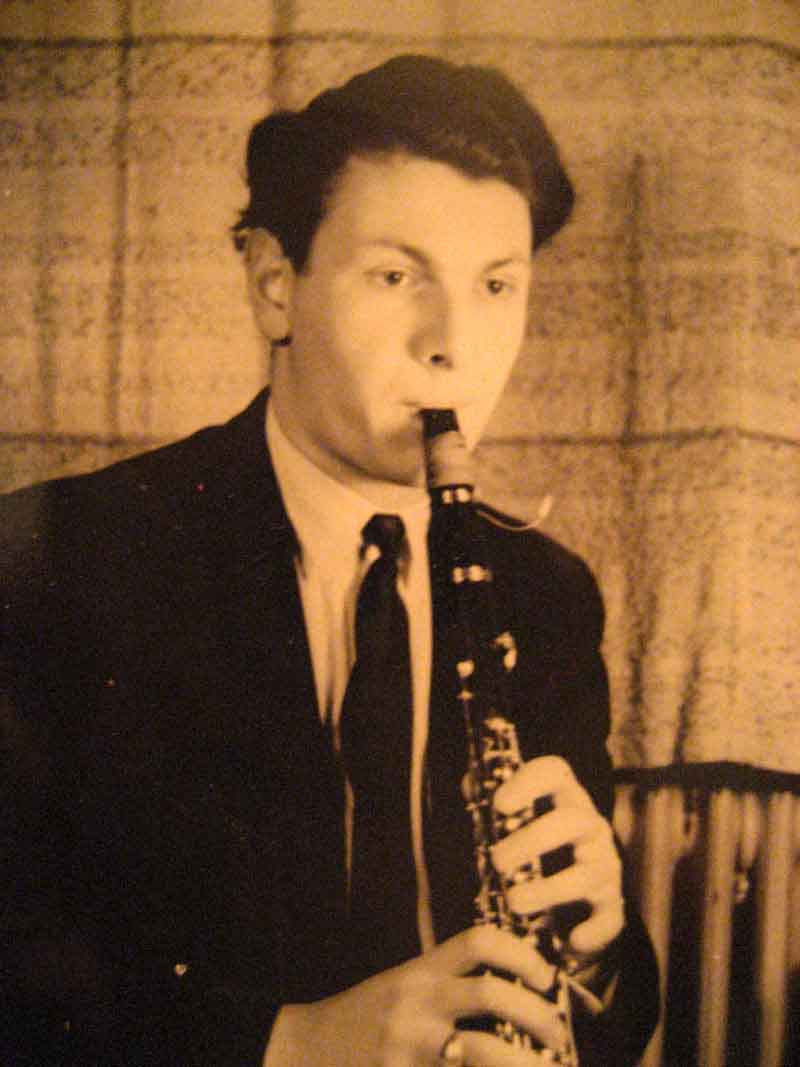
He and his siblings all followed music lessons, Werner practiced the piano and the clarinet. Every free moment was played, his brother on viola and flute, his sister also on the piano. Werner adapted some pieces for the existing instruments. House concerts were advertised with colored, self-painted posters.
Composing and arranging goes back to Kaegi's early childhood. Before he could write letters, he seems to have developed his own notation in order to be able to record his musical thoughts. During his first piano audition as a young boy, he surprised his listeners with his own improvisations and not the repertoire he had rehearsed.
Werner Kaegi spent the war years in the Hof Oberkirch boarding school near Chur. He immerses himself passionately in classical history, Latin and Greek and of course there is a lot of music here too. His early songs were written during his high school years.
Studies in Zürich, Basel, Heidelberg and Paris
After graduating from high school, he moved to Zurich and Basel to study piano, art history, musicology and mathematical logic. In 1951 he completed his doctoral thesis with a mathematical study of Bach's inventions and fugues (The simultaneous way of thinking in J.S. Bach's inventions, symphonies and fugues, 1952)
From 1951 he studied with the great Paul Hindemith, who was living in Zurich at the time, and became his assistant for a short time. He traveled to Heidelberg and in 1953 to Paris, where he studied composition with Arthur Honegger and Louis Aubert. Through the Paris Radio he came into contact with the pioneers of electroacoustic music, Pierre Schaeffer and Musique Concrète. The young composer earns his living with arranging, ghostwriting and playing the piano. He appears regularly on Radio Zurich and becomes part of the Cabaret Rüeblisaft as a resident pianist and composer. As a young avant-garde composer, he is performed more and more often, both in Switzerland and abroad.
Centre de Recherches Sonores
From 1963 to 1970 Kaegi worked at the Center de Recherches Sonores, Radio Suisse Romande's studio for electroacoustic music in Geneva. There he began to compose electronic music and tape music, including pieces such as Suisse vigilante (1963), Éclipses (1964) and Entretiens (1965). At the C.R.S. Kaegi created several radiophonic works, such as La Porte Noire (1964) and Zéa (1965).



In addition to large orchestral works, he is increasingly looking for the border areas: He combines jazz with symphonic music, language with sound, instruments with loudspeakers and is increasingly looking for new sound material. Concerto for jazz quartet and strings (1959), Mystic Puzzle 2, for jazz ensemble and tape (1966), Magna Voce ad te dominum clamo (1967), Entretiens Solitaires (1968), Hydrophonie (1969), Thai Clarinet (1970) and Kyoto (1970). The radio not only offers Kaegi the technical possibilities of the radio studio, but also gives him access to the radio orchestra, with which he can try out new approaches. It was during this time that the long-standing collaboration and friendship with the jazz clarinetist and bandleader Luc Hoffmann, for whom he has written various works, comes from.
Although Kaegi still wrote many traditional compositions in the 1950s and 1960s, his main interest lay in the new developments. He immersed himself in the secrets of radio technology at the time and experimented wherever possible, partly in his own studio in Zurich, as well as on Radio Geneva.
"Was ist elektronische Musik?" (What is Electronic Music?)
This question was not only central to his musical works in the 1960s, but it also became the title of the very influential book that Kaegi published in 1967 and which remained known for many years as the bible of electronic music.
That period ended in 1971 with the release of Kaegi's one-of-a-kind record release, a 7-inch record entitled From Sin Tone to Electronic Music. In the 12-page booklet, Kaegi analyzes the basic components of electronic music such as sine, sound synthesis, ring modulation or electronic oscillator, with sound samples and excerpts from his latest works of the time on the CD. These publications came about through the many hours Werner had spent in the studio of Radio Geneva, but also through his meticulous studies of sound. It laid the foundation for the development of the VOSIM model
Osaka World's Fair 1970
In 1970 Kaegi won the Swiss competition for the sonorisation of the Swiss pavilion for the world exhibition in Osaka. To this end, he created Illumination Expo'70 Osaka, a purely electronic work that was broadcast through hundreds of speakers from a huge aluminum tree. Constantly shifting, infinite sound tracks accompanied a play of light from countless incandescent lamps. The piece was commissioned by the Swiss government.
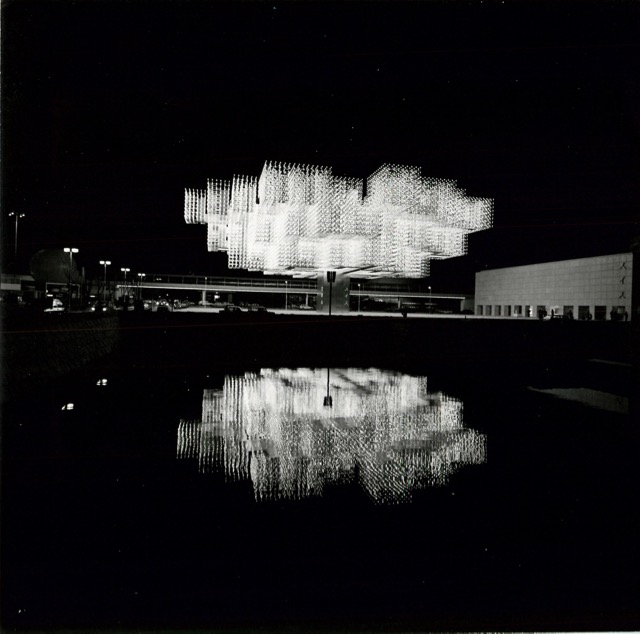

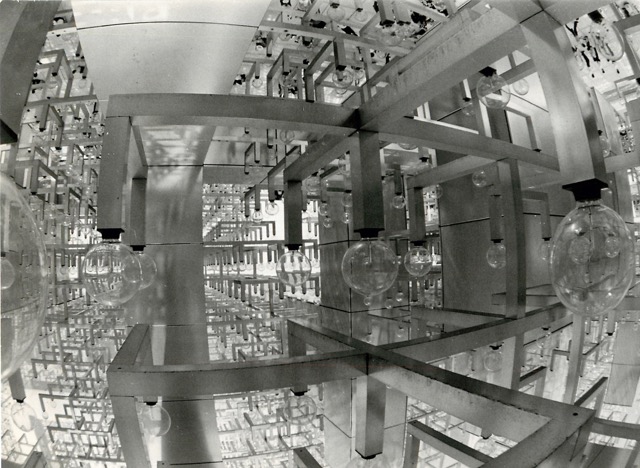
Institute of Sonology
In 1969, Kaegi was invited by Georg Michael Koenig to compose at the progressive Utrecht Institute of Sonology (formerly STEM) in the Netherlands, where he created the tape music of Hydrophonie I. The institute offered him technical options, such as voltage control and digitization, which were not currently available in Switzerland.
Soon he became a member of the scientific team and got a permanent position as professor. Kaegi worked at the institute as a composer, researcher and lecturer in the field of electronically generated music and composition. His demanding but colorful lectures not only attracted Dutch students, but mainly foreign students and composers. His students included Benno Ammann, Lasse Thoresen, Jos Janssen, Cort Lippe, Kathleen St. John, Trevor Batten and Pierre van Berkel. In the 1970s he traveled to all the important congresses on this subject and was a much sought-after speaker. He developed his own visions about the future of music and the way it could and should connect with technology.
The invention of the VOSIM signal
Already in his book from 1967 Kaegi published the idea that musical sounds can be traced back to speech formants and thus vowel sounds. In experiments in which he reduced natural signals, he was able to show that only a small part of the signal is necessary for clear recognition of the sound. And vice versa, that even relatively simple artificially generated signals lead to clear sound recognition. This data reduction was the basis for the discovery of the VOSIM signal, which Kaegi was only able to realize in the institute's analog studios through voltage control. The name VOSIM, which stands for VOice SIMulation, clearly reflects the connection between music and language suggested by Kaegi. The research was financed thanks to a grant from the Fonds Nationale Suisse (The Problem of Mental Coding and Decoding of Musical Information, Fonds National Suisse, 1975 Project 1.559-0.71.)


VOSIM broke through the currently generally cultivated view that sound synthesis of complex, controllable sounds was only possible additively, i.e. by combining Fourier components, i.e. sine tones, and was therefore extremely difficult to achieve with the analog technology of the time. Kaegi was already demonstrating speech sounds he had generated in an analog studio around 1970 with clearly audible vowels and short words like Mama. He not only published his discoveries in articles in the journal Interface (A new approach to a theory of sound classification, Interface 1972; A minimum description of the linguistic sign repertoire, Interface 1973 & 1974), but also presented sounds at some congresses across the board World.
The VOSIM model was published in 1976 by Kaegi, together with his colleague Stan Tempelaars (VOSIM-A new sound-synthesis system, Interface 1976). The article shows how the VOSIM signal leads to a high-energy spectrum that contains a formant. VOSIM was regarded as one of the most important sound synthesis systems in the USA.
Sound synthesis with the computer
As early as 1970 it was clear that modern sound synthesis could only achieve further advances with digital technology. The Department of Sonology purchased a DEC PDP-15 computer, a very expensive acquisition at the time, but which accelerated research in rapid steps. Two computer-controlled digital VOSIM generators were built, which functioned synchronously and which could generate two-formant sounds. Kaegi and his employees immersed themselves in the necessary programming languages and built control systems that could control the hardware. Kaegi worked for several years on his MIDIM system, which should give the artist a completely new instrument. The idea was that the composer could create his own instrument, but once it was defined, it would still retain its tonal recognizability, as is the case with acoustic instruments.
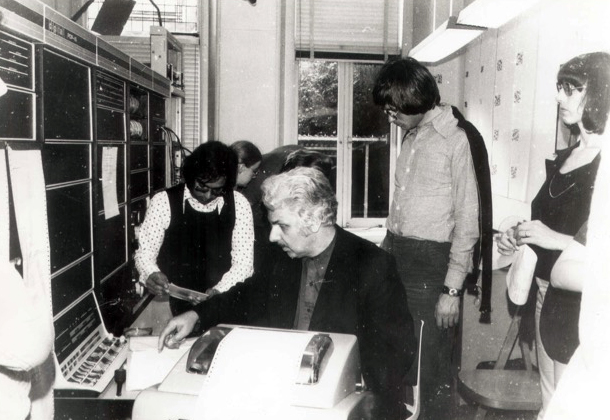

Computer Compositions
With the move to Holland Kaegi had completely stopped his composing activities. The limitations of traditional instruments and the orchestra brought him to the deepest conviction that new ways must be found to resolve the sound spaces of the future. The VOSIM generators, which the technical team of the university had implemented in a fully digital version, gave him the opportunity to generate new sounds in a controllable way. When his composition program MIDIM had matured enough, he turned more and more to composing. The result was Consolation (1978, three parts: In memoriam, Automne and Vers d'autre Jeux), Dialogue () and Ritournelles for soprano and computer (1981), which have been performed many times both in Holland and abroad.
The MIDIM Group
The Institute for Sonology was gaining prominence and attracted many young composers from all over the world. After the morning lectures, the students immersed themselves in the use of the "MIDIM language" on the computer in the afternoon, mostly under the guidance of the assistants Paul Goodman and Jos Janssen.


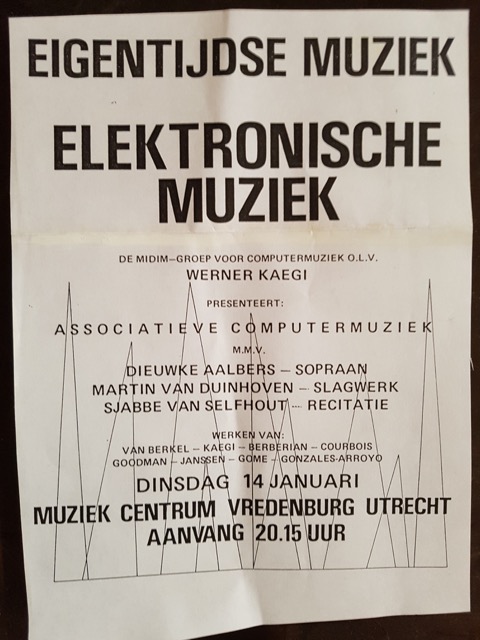
From 1981 a group of international students, composers and artists began to work together in the so-called MIDIM group. Many compositions and performances were created as "associative computer music". Surrealist and Dadaist sessions took place where the members followed their spontaneous inspirations a la écriture automatique to compose pieces straight into the computer, write poems on the stage and draw spontanous pictures in a flow. Between 1981 and 1991 the MIDIM group organized numerous concerts in which the interaction between different art disciplines in museums (such as the Stedelijk Museum in Amsterdam), concert halls (Muziekcentrum Vredenburg in Utrecht) and churches (Domtoren Utrecht) were experimented. The group consisted of Kaegi himself, Paul Goodman, Jos Janssen, Pierre van Berkel, Pieter Kuipers and Heinerich Kaegi (Werner's son). Many others joined the group temporarily.
Sonology The Hague
Although the Institute for Sonology in Utrecht was able to enjoy an increasing influx of students and artists from all over the world, the University of Utrecht only wanted to maintain the institute as part of a faculty. The interdisciplinary character made that impossible. In 1986 the famous institute in Utrecht was closed and officially relocated to the Royal Conservatory of The Hague. The old DEC computers were scrapped.
Many of the leading employees such as Werner Kaegi, Michael Koenig and Frits Weiland saw no role for them in this change and left the institute. For several years, the MIDIM group continued research activities on a private level, which was made possible by small computer systems such as Atari ST. Concerts were organized all over Holland with project funding until 1991.
In 1987 Kaegi was honored for his piece Ritournelles for soprano and tape at the 15th Bourges electro-acoustic competition in Bourges, France. Kaegi has been traveling between Utrecht and southern France since 1986. In recent years he has mainly concentrated on his writings.
- Druckansicht
- Inhaltsverzeichnis
- Letzte Änderung:
30.03.2024, 16:41 - Kontakt-Formular

